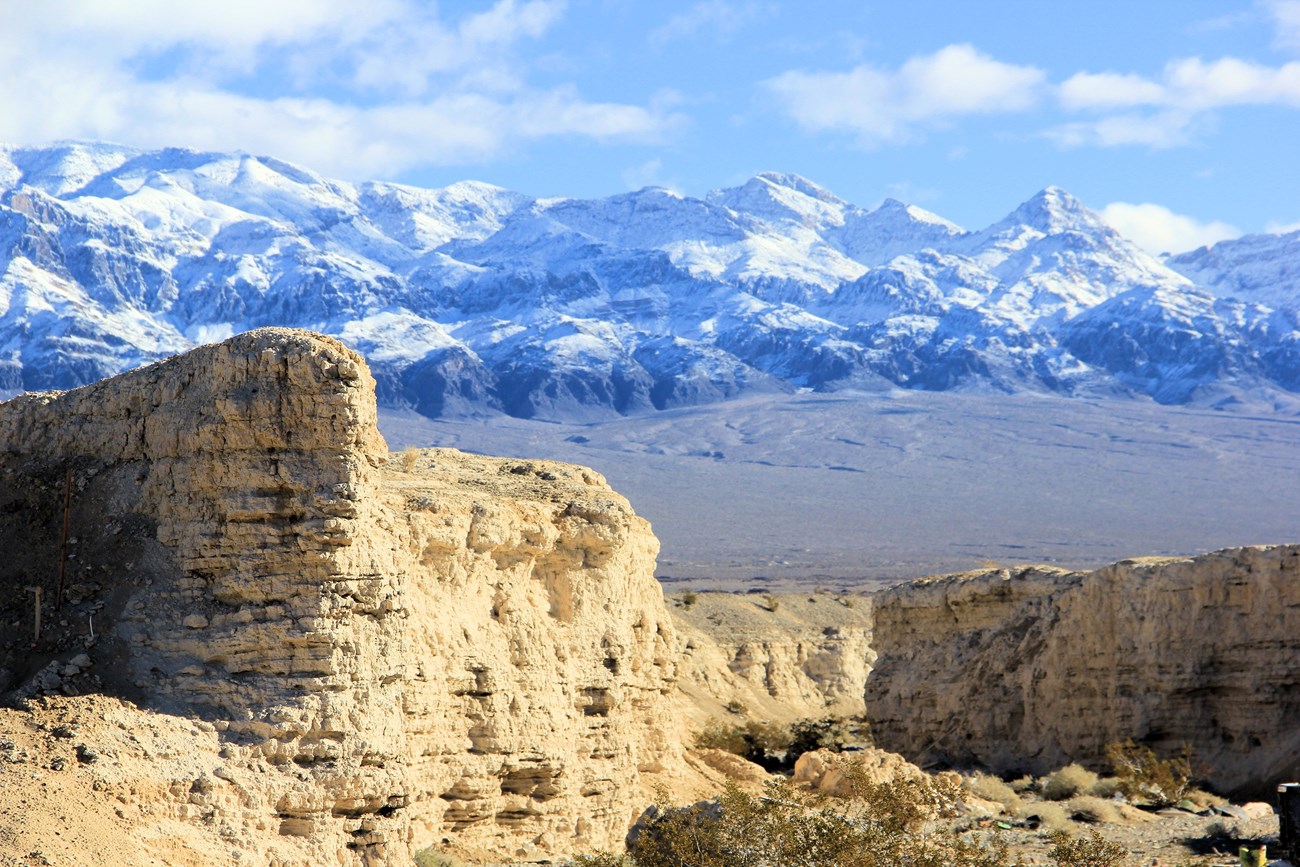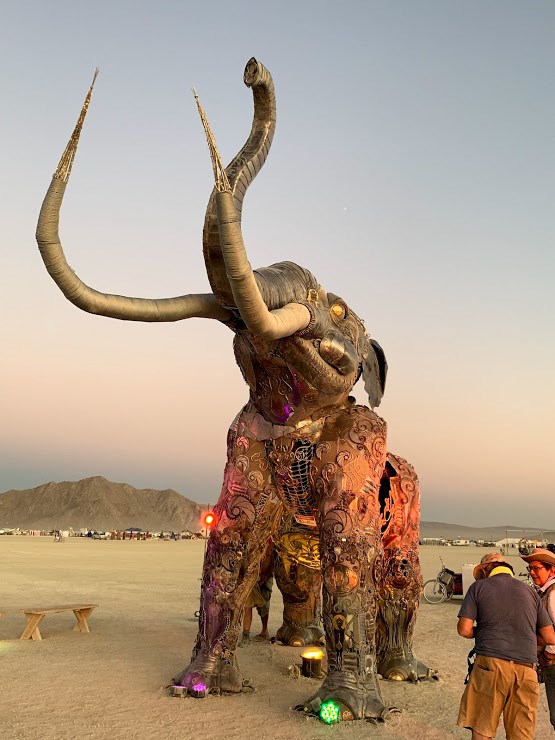Part of a series of articles titled Park Paleontology News - Vol. 12, No. 2, Fall 2020.
Article
A Monumental Task: A Vision for the Future of Tule Springs Fossil Beds National Monument

Lauren Parry & Esmeralda Elsrouji

It’s hard to forget the feeling of descending into the Upper Las Vegas Wash, as views of the Las Vegas Strip disappear behind buff-colored walls of sediment. These badlands are what remain of Pleistocene wetlands that were once lush habitats for Ice Age megafauna, like Columbian mammoths and extinct camels. The immersive experience within this urban wilderness helped inspire Derek Carter, the new Superintendent of Tule Springs Fossil Beds National Monument (TUSK), in developing the vision for the future of the monument. “…It’s the human instinct of connecting with nature and being able to satisfy that need that is important to your health and well-being…once you walk into these washes…you walk out with a different perspective.”

TUSK was established in 2014 to conserve, protect, and interpret a diverse assemblage of Pleistocene vertebrate fossils and their geologic context. Throughout the Pleistocene, groundwater-fed seeps, springs, and wet meadows trapped windblown sediment to form the deposits of the Las Vegas Formation. These sediments also capture periods of drying, erosion, and soil formation, which indicate that these desert wetlands responded to global climate events. When used together, the rock and fossil records can be powerful tools to understand changes in Earth’s ecosystems through time.
Although saber-tooth cats and bison no longer roam the Las Vegas metro area, Superintendent Carter hopes to transform TUSK into a premier paleontological research park where visitors feel connected to the land and scientific research. Since starting this position in early June, he has risen to the challenge of planning for the future of a new monument: “We’re still building from the ground-up. Coming into this role, most superintendents don’t get this opportunity whatsoever – it’s a unique experience. I’m taking advantage of the learning opportunity that it presents and enjoy connecting with the many different subject matter experts.”

Photo courtesy of Dawn Reynoso.
Superintendent Carter sees TUSK’s urban setting as both a challenge and an opportunity to create an accessible and immersive experience in paleontology. Long-term plans for the monument include place-based educational opportunities: “…Scientific researchers being able to interact [with the public] I think is what makes the visitor experience…” He sees paleontology as a great tool to inspire curiosity and fascination with the natural world as well as encourage stewardship for fossils on public lands. Since the establishment of the monument, it has been a challenge to change the public perception and awareness of TUSK with limited staff and infrastructure. “Law enforcement has been doing a great job,” notes Superintendent Carter, as illegal target shooting and trash dumping incidents have decreased since 2014. Volunteer efforts, notably from the Protectors of Tule Springs (POTS), have also spearheaded trash cleanup and outreach efforts. Community involvement and diverse partnerships have helped TUSK work toward its long-term goals. “Why work separately?” Superintendent Carter has been very supportive of a cooperative management agreement between TUSK and neighboring Ice Age Fossils State Park, whose visitor center is slated to open to the public in 2021. New infrastructure adjacent to the monument is bound to draw more visitors to the area, which Superintendent Carter hopes will keep the momentum going toward the long-term goals of the monument.
Balancing the mission of TUSK with resource protection is no easy task. “How do you provide that recreational opportunity while conserving a resource?” inquires Superintendent Carter. His vision includes developing ADA accessible trails and an integrated trail system that will direct visitors to points of interest while minimizing the impact on paleontological resources. Another solution is to continue the momentum of public outreach and interpretation. Superintendent Carter looks forward to expanding TUSK’s social media presence as a way to communicate with the public with limited staff. Additionally, there are several interpretive kiosks at key entry points to the monument that explain the natural history of Tule Springs, hiking safety, and visitor etiquette. Eventually, Superintendent Carter hopes to develop beacons as points of interest to foster a sense of place. He is inspired by the “Monumental Mammoth,” a collaborative public art piece created by Tahoe Mack, Luis Varelo-Rico and Dana Albany. This life-sized sculpture of a Columbian mammoth repurposes trash cleaned up from TUSK to portray one of the most iconic animals of Pleistocene Las Vegas. “It’s humbling to stand next to something that you can put a size to,” notes Superintendent Carter.

Photo credit San Bernardino County Museum.
At TUSK, one can find themselves humbled by the history of life, history of the earth, and the shape of the landscape. Tackling the challenge of building a national monument from scratch is also a humbling but rewarding experience. “This is definitely a challenge,” remarks Superintendent Carter, “because I’ve never built a park before – not many people have, but I think it’s such a fascinating process.” He looks forward to seeing how monument staff, volunteers, and community partners collaborate to make this vision and Ice Age Las Vegas come alive.
Related Links
- Tule Springs National Monument, Nevada—[Geodiversity Atlas] [Park Home]
- NPS—Fossils and Paleontology
- NPS—Geology
Last updated: October 8, 2020
